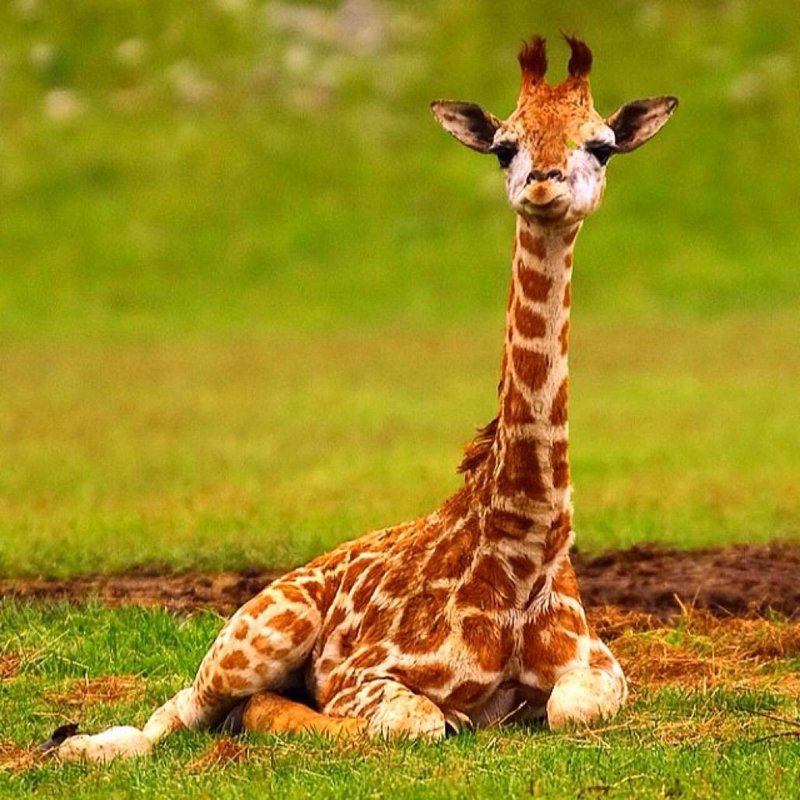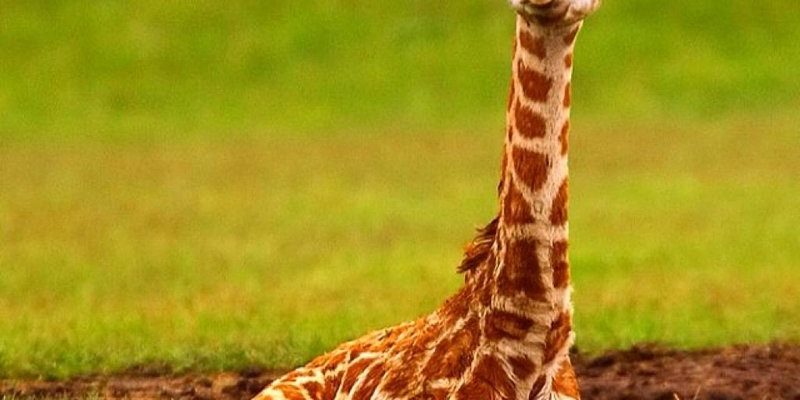
Imagine being a baby giraffe, a cute bundle of legs that seems too wobbly to stand. The first moments are critical. The mother giraffe’s instincts kick in, guiding her calf through the complexities of survival. In the wild, it’s not just about growing up; it’s about learning the ropes in an environment full of wonders and dangers alike. Let’s delve into how giraffes nurture their young and ensure their survival in the wild.
The Journey Begins: Birth of a Giraffe Calf
When it comes to giraffes, the process of giving birth is strikingly unique. After a lengthy 15-month gestation period, a mother giraffe gives birth, usually standing up. This position is important because when the calf drops to the ground, it gets a head start at life. The fall stimulates the calf’s lungs and helps it to take its first breath.
The moment a calf is born, it’s about six feet tall and weighs around 100 to 150 pounds! That’s like having a tiny, furry tree just starting out in the great outdoors. Immediately, the mother giraffe licks the calf clean, which not only bonds them but also helps stimulate circulation and breathing. You might be wondering why this is important—a clean calf is less likely to attract predators right away, giving it a better chance to survive its first moments of life.
First Steps: Learning to Stand and Walk
After birth, those first hours are critical. Calves are born with a natural instinct to stand and walk, and believe it or not, they usually start trying to get up within a few minutes. It’s a little like watching someone learn to ride a bike for the first time. They wobble and sway, but with encouragement and the right balance, they start to find their footing.
Within the first 24 hours, a calf should be able to walk. This is essential because, in the wild, standing still can make a young giraffe an easy target for predators. The mother giraffe stays close and watches over her calf, offering reassurance. Imagine how it feels for the baby—making those first tentative steps while knowing mom is right there, ready to help.
Motherly Protection: Keeping the Calf Safe
Once the calf is up and walking, the mother’s job shifts to protection. Giraffe mothers are incredibly vigilant. They scan the horizon for predators like lions or hyenas. Here’s the thing—while giraffes are tall and can see far, their young cannot. A mother will often keep her calf close, shielding it from danger when needed.
Interestingly, mothers will sometimes even use their bodies to block the calf from sight. They might turn their backs to a threat, standing tall and strong, creating a shield. This protective behavior is crucial in the wild, where threats can emerge suddenly. The bond between the mother and calf becomes a fortress of safety that allows the young giraffe to develop without feeling exposed.
Feeding Time: A Calf’s First Meals
When it comes to food, giraffe calves primarily rely on their mother’s milk in the early months. Mother giraffes are excellent at finding the best leaves and branches, often from the acacia tree, which is a favorite. You might think of it like a mom bringing home the best takeout; she instinctively knows where to find the healthiest and tastiest options for her baby.
Typically, calves nurse for around 9 to 12 months. During this time, they also start to nibble on leaves and browse as they observe their mothers. It’s quite a sight to see a young giraffe mimicking its mom, stretching and reaching for those delicious leaves. This early experience not only helps the calf learn about different food sources but also prepares it for a time when it will have to fend for itself.
Social Learning: The Importance of Play
Another fascinating aspect of raising a young giraffe is the role of social interactions. Giraffe calves are playful creatures; they learn a lot through play. When you watch a group of young giraffes, it’s like observing a mini circus. They run around, kick, and occasionally engage in gentle sparring.
This play is not just for fun; it’s a way for calves to develop their muscles and coordination. It also teaches them social skills they’ll need as adults. Just like kids on a playground learn to navigate friendships and conflicts, giraffe calves learn to establish their roles in the herd. Mothers often watch over this playtime, ensuring it remains friendly while also stepping in if they sense things getting too rough.
Growing Up: Transition to Independence
As calves grow, they gradually begin to spend more time away from their mothers. This transition is crucial for developing independence. By around 12 to 18 months, a young giraffe might start to roam a bit further, testing its limits and capabilities. It’s almost like a teenager getting their first taste of freedom—exciting, yet a little risky.
During this time, mothers still keep a close eye on their young ones. They’ll often follow from a distance, ensuring that the calf is safe while allowing it to learn and explore. As the young giraffe becomes more adept at foraging for food and avoiding danger, it gains confidence. Eventually, it will roam freely, joining the herd as a vital member of the community.
The Lifelong Bond: Mother and Calf Relationships
Even after a calf grows up and becomes independent, the bond with its mother often remains strong. Giraffes are social animals, and those relationships continue to shape their lives. Mothers and calves will often recognize each other even after some time apart.
This ongoing connection is essential in the wild, as it contributes to the survival of the species. When a mother giraffe raises her young successfully, she passes on essential knowledge that can help that calf thrive in the vast savannah. In many ways, it’s a cycle of love, protection, and learning that keeps giraffe families close and communities strong.
In conclusion, giraffes have an intriguing way of raising their young that combines instinct, nurturing, and social connection. From the moment a calf is born to its journey towards independence, each step is crucial for survival. Observing how a mother giraffe responds to her calf’s needs can teach us much about the importance of family in the animal kingdom. So the next time you see a giraffe, remember the journey it took to get there—it’s a beautiful story of growth, protection, and connection.

